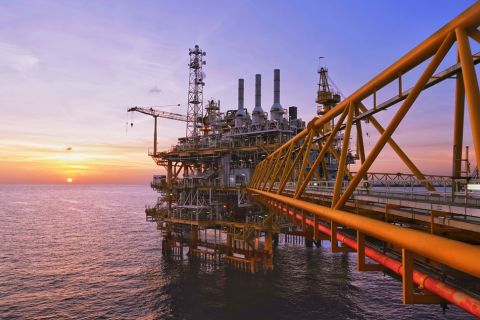I spent the first days of May on the show floor at the 2018 Offshore Technology Conference (OTC) in Houston. Overall, the upbeat mood of the event ensured that I witnessed more smiles than frowns, engaged in more friendly hugs of “good to see you made it this year” and heard more discussions about future projects than forlorn sighs of resignation to it being another down year in the market.
It goes to show that the offshore industry long ago embraced the old proverb about how a “smooth sea never made a skillful sailor” and has weathered yet another market storm by adjusting its sails.
Events like OTC make it possible for energy professionals to meet and exchange ideas and opinions that are necessary to advance scientific and technical knowledge for offshore resources and environmental matters. Offshore E&P operators, service companies and vendors embraced the lessons shared and the technology strategies demonstrated at previous OTCs to not just survive but emerge transformed from the rubble of 2014’s great storm of a market crash.
The offshore E&P industry entered 2018 leaner and meaner, with a big jump in project sanctions in 2017 but also a big drop in average project size and capex, according to a recent Wood Mackenzie analysis. Cost reduction efforts have been successful as project footprints have been reduced through fewer wells, smaller facilities and the subsea tiebacks.
As a result, the projects are smaller, with an average capex to develop major projects (commercial reserves more than 50 MMboe) sanctioned in 2017 falling to $2.7 billion from an average capex of $5.5 billion for those projects sanctioned over the last decade, according to the analysis.
In the days leading up to OTC, Shell Offshore Inc. announced that it and its partner Statoil USA E&P had made the final investment decision for the deepwater U.S. Gulf of Mexico (GoM) project at Vito.
Featuring a new simplified host design and eight subsea wells with deep in-well gas lift, the Vito Field is expected to reach peak production of approximately 100,000 boe/d, according to a press release. Vito will be the company’s 11th deepwater host in the GoM and is scheduled to begin producing oil in 2021.
The estimated breakeven price for the project was pegged at less than $35/ bbl, according to the release. This reduced breakeven was made possible through cost reductions of more than 70% from the original concept, the release noted.
Offshore E&P survived the storm through adaptation, collaboration, innovation and standardization and now enters a period of rebuilding and growth. Becoming leaner and meaner won’t happen overnight, but through the continued sharing and disseminating of knowledge, the journey will certainly be memorable.
Recommended Reading
TotalEnergies Starts Production at Akpo West Offshore Nigeria
2024-02-07 - Subsea tieback expected to add 14,000 bbl/d of condensate by mid-year, and up to 4 MMcm/d of gas by 2028.
E&P Highlights: Feb. 5, 2024
2024-02-05 - Here’s a roundup of the latest E&P headlines, including an update on Enauta’s Atlanta Phase 1 project.
CNOOC’s Suizhong 36-1/Luda 5-2 Starts Production Offshore China
2024-02-05 - CNOOC plans 118 development wells in the shallow water project in the Bohai Sea — the largest secondary development and adjustment project offshore China.
US Drillers Cut Oil, Gas Rigs for First Time in Three Weeks
2024-02-02 - Baker Hughes said U.S. oil rigs held steady at 499 this week, while gas rigs fell by two to 117.
Equinor Receives Significant Discovery License from C-NLOPB
2024-02-02 - C-NLOPB estimates recoverable reserves from Equinor’s Cambriol discovery at 340 MMbbl.




